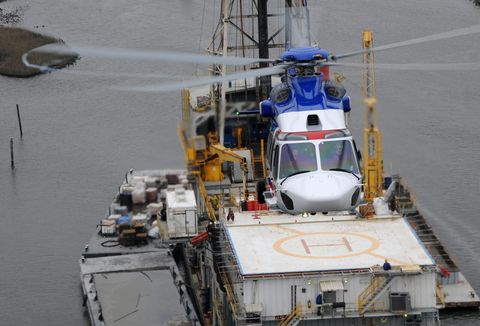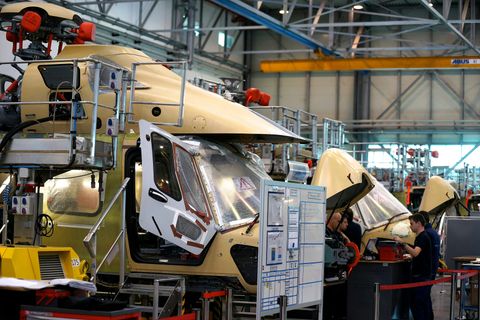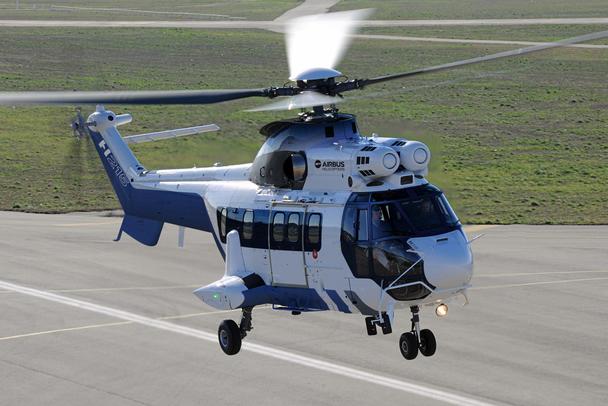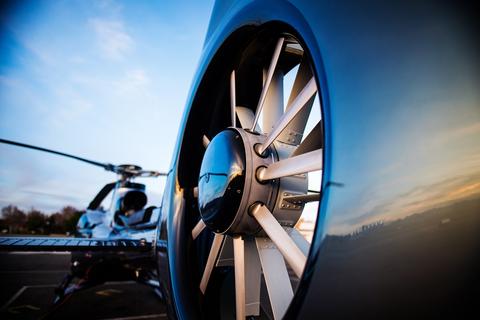The 7-tonne class H175 was developed by Airbus as its new-generation medium-sized rotorcraft, certified in accordance with the latest and most demanding regulatory requirements. Benefits include enhanced flight safety, more volume per seat for passenger comfort, mission versatility, simplified maintenance and cost effectiveness to match customer expectations.
World record-setter
The H175 already is a record-setter, establishing a time-to-climb record of 6,000 meters in 6 min., 54 s. and a time-to-climb record of 3,000 meters in 3 min. 10 s.

2 Pilots

150 kts

Over 5th

590 NM
A smooth and powerful rotorcraft
Airbus’ H175 combines long range capabilities with smooth flight qualities, excellent payload and cabin comfort.
The H175’s extended, air-conditioned cabin provides the most volume and window surface per passenger in its class. A maximum of four passengers can be seated per row. Vibration and sound levels are low, even at high cruise speeds, contributing to a smooth flight.
Powered by two PT6C 67E versions of Pratt & Whitney Canada’s highly reliable PT6 engines, the H175 benefits from excellent performance and large power reserves, which support efficiency and safety during takeoff and landing, rig approach, hovering and hoisting.
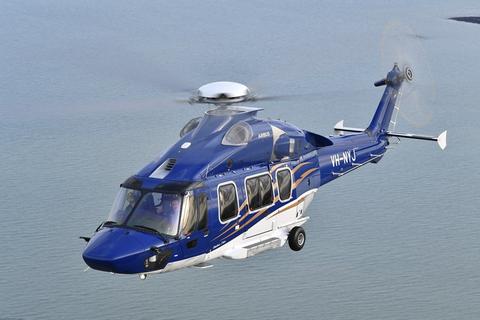
The economical performer, taking operators farther and faster
Contributing to the H175’s competitive edge are its recommended cruise speed of 150 kts and fast cruise speed of 160 kts; the hover out of ground effect (HOGE) with a maximum 7.8-tonne takeoff weight at 5,800 ft in ISA+20°C conditions; and extensive power reserve and heli-deck performance (PC1) at maximum takeoff weight in ISA+20°C conditions.
With a standard fuel tank capacity over 2,000 kg, the H175 offers flexibility to operators in terms of range or endurance.
The pilot’s first choice
The H175's Helionix® avionics suite and integrated 4-axis autopilot – derived from Airbus’ H225 helicopter – provide the highest levels of safety and mission flexibility.
Meeting the latest international standards, Helionix® reduces pilot workload through unrivalled situational awareness, improved flight envelope protection and system redundancy.
The dual-duplex 4-axis automatic flight control system (AFCS) ensures precision and stability during flight, even in the harshest weather conditions. Its functions include new automatic modes such as automatic recovery in the event of pilot disorientation, easier final approaches (particularly at low heights, providing prevention against terrain collision), a hands-off one-engine failure management mode, and a Rig N’ Fly mode for approaches to gas/oil rigs. The TCAS II function for automatic collision avoidance also supports the helicopter’s overall flight safety.
An intuitive human-machine interface further reduces pilot workload and has an innovative self-monitoring and alerting system, backed by audio warnings.
Cockpit commonality offers multi-platform customers with training credits. The Airbus-designed Helionix avionics system is also incorporated on the company’s H135 and H145 helicopters, as well as the H160.
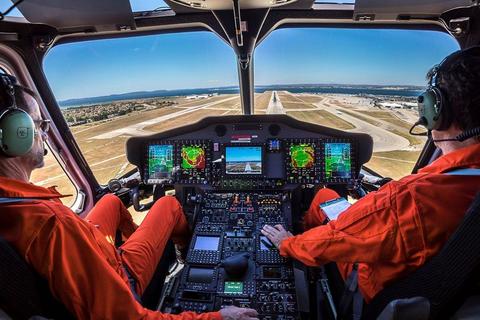
Designed with safety in mind
The H175 was conceived from the start to offer the highest safety levels in all flight modes. The helicopter complies with – or exceeds – the latest CS29 airworthiness standards, with the oil and gas version incorporating all of the safety and mission recommendations of the IOGP (International Association of Oil & Gas Producers).
To achieve these standards, the helicopter has fully redundant systems; crashworthiness protection; energy-absorbing landing gear, seats, structure and fuel tanks; and emergency floatation devices, which can be inflated in flight or automatically at ditching.
The emergency floatation system is certified at Sea State 6 conditions, with the high water-line reducing the risk of capsizing.
The H175’s offshore configuration includes:
- 4-axis autopilot;
- Rig’N Fly automatic approach mode for oil/gas platforms
- Locate performance with vertical guidance (LPV)
- Synthetic vision system (SVS)
- Health and usage monitoring system (HUMS)
- Helicopter flight data monitoring (HFDM)
- Alerting and failure management system
- Helicopter terrain awareness and warning system (HTAWS)
- Traffic collision avoidance system (TCAS II)
- Automated dependent surveillance-broadcast (ADS-B Out)
- Unrivalled pilot assistance with the Helionix® avionics suite
For passenger safety, quick and easy egress is provided through extra-large push-out windows that exceed EASA Type IV emergency egress size requirements, while each passenger is seated at a maximum of one seat from an egress exit.
On-ground safety is provided by the rotorcraft’s high-set tail rotor with a 2.3-metre ground clearance to facilitate movement around the aircraft – especially during operations on landing pads. Passenger boarding is enhanced by the real-time view provided by a tail-fin-mounted forward-looking camera, monitored from the cockpit display.
An autonomous cockpit camera can record cockpit crew actions and replay missions for training and procedure improvement purposes.
Featured H175
Explore more

